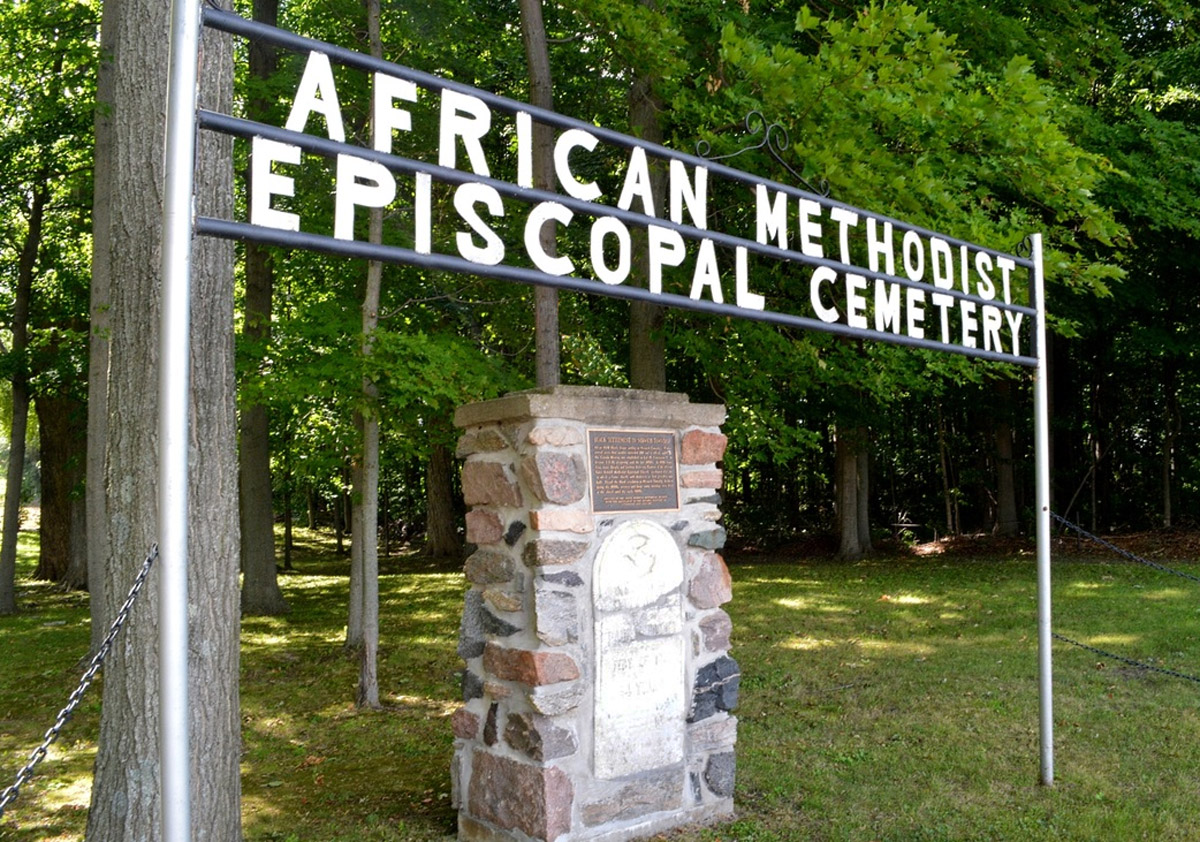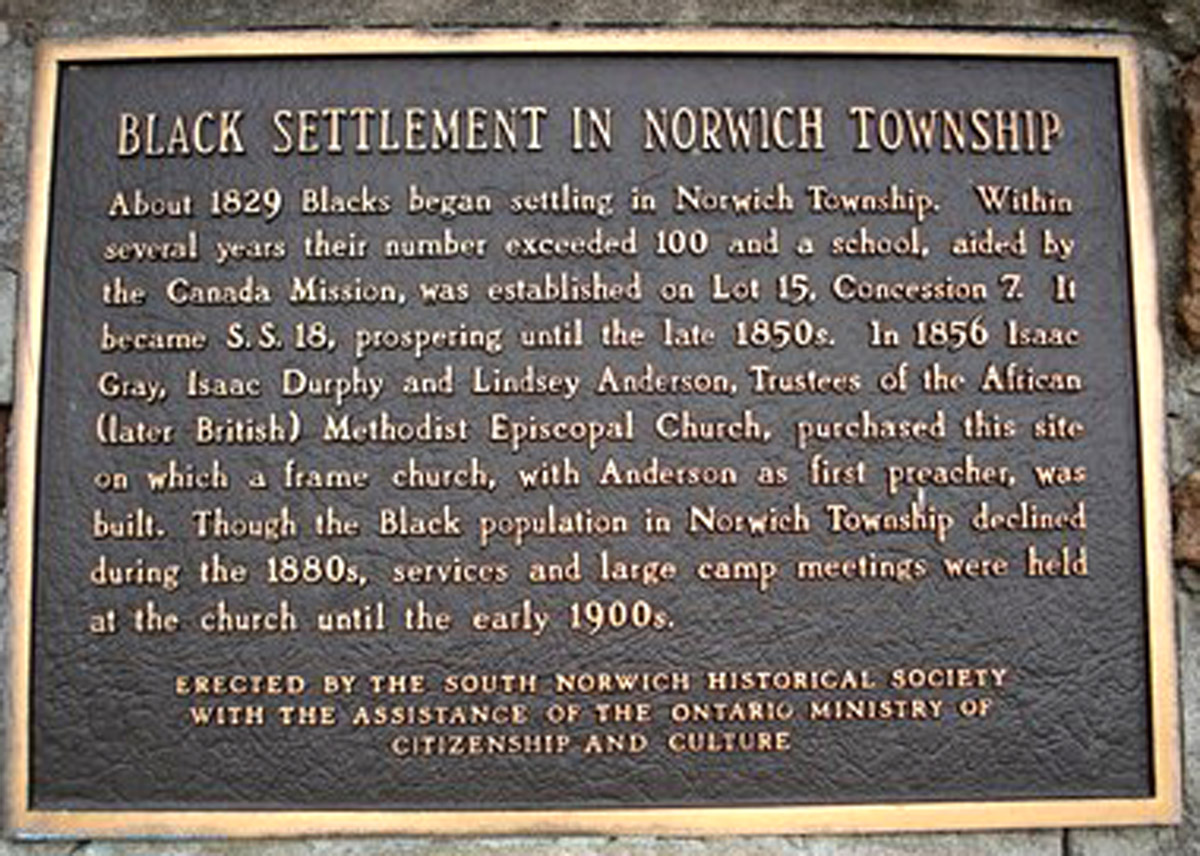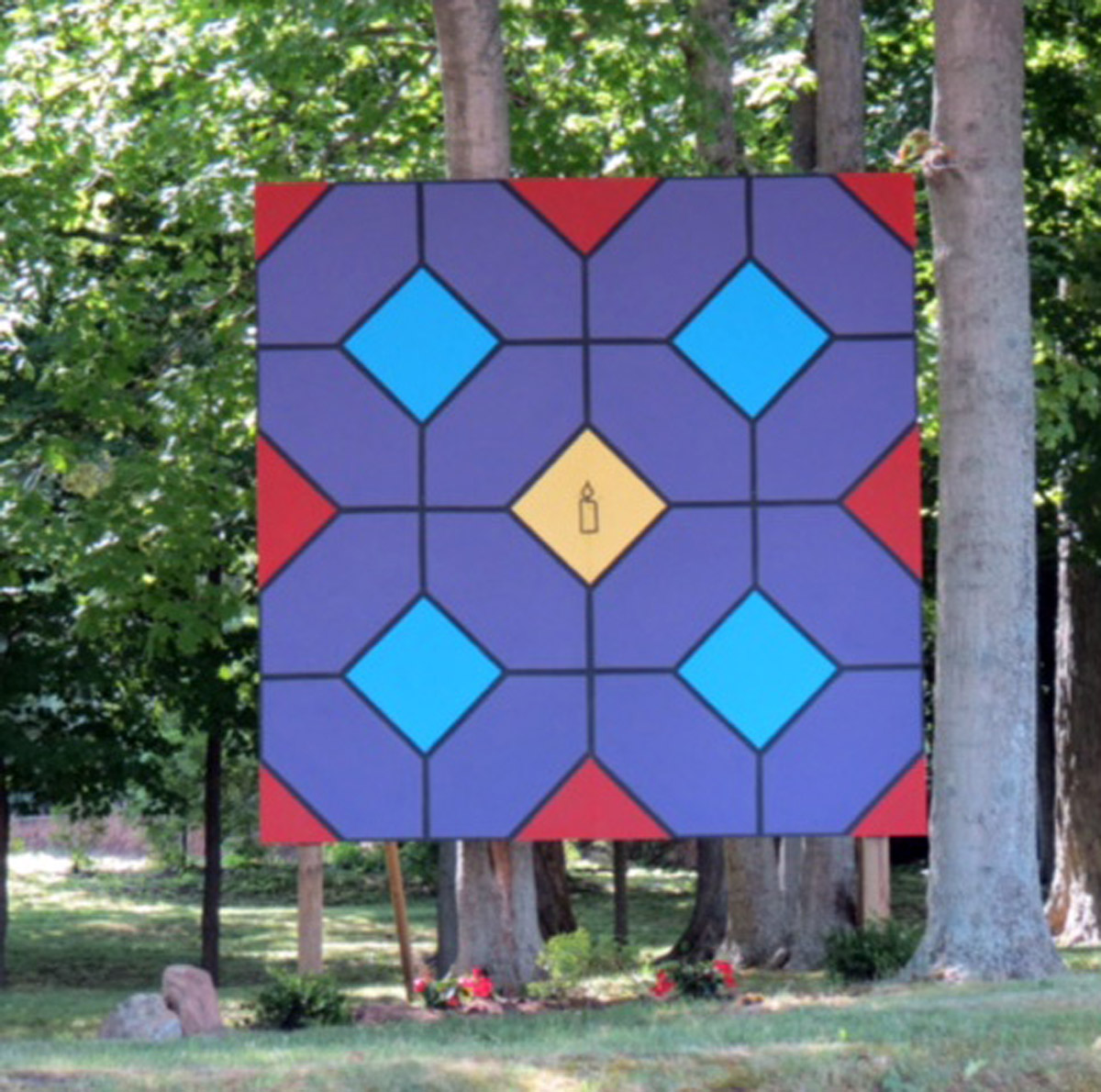Otterville African ME Church & Cemetery

The Otterville African Methodist Episcopal Church was constructed on the outskirts of Otterville by 1856. This structure became the centre for large church camp meetings attended by both Black and white people from the surrounding area. Often the visiting Black minister preached in the Otterville Methodist Church. In 1856, the AME Church in Canada split from its prdecessor in the United States and was renamed the British Methodist Episcopal Church, in order to give it a more Canadian identity. Surrounding the site of the former church is the cemetery, which was restored by the South Norwich Historical Society in 2007.
* * *
Black people leaving the northern United States for Canada often settled near members of the religious Society of Friends (Quakers). Around Otterville, home of ardent abolitionist William Cromwell, they felt safe and were accepted. The earliest known land record for a Black settler is dated 1833. By 1840, the Otterville area had become a significant area of Black settlement in Upper Canada. Education was extremely important to these settlers and they soon built a school for their children, which became S.S. #18. School records show Black children attending every school in the former Township of South Norwich. Though the Black population in the Otterville area thrived for many decades, by the early 1900s the community was in decline, as most of its members had moved to live elsewhere, many resettling in the United States. The Grand Trunk Railway Station Museum houses the local Black History collection.

This plaque was erected by the South Norwich Historical Society with the assistance of the Ontario Ministry of Citizenship and Culture. Black Settlement in Norwich Township: About 1829 Black people began settling in Norwich Township. Within several years their number exceeded 100 and a school, aided by the Canada Mission, was established on Lot 15, Concession 7. It became S.S. 18, prospering until the late 1850s. In 1856 Isaac Gray, Isaac Durphy, and Lindsay Anderson, Trustees of the African (later British) Methodist Episcopal Church, purchased this site on which a frame church, with Anderson as first preacher, was built. Though the Black population in Norwich Township declined during the 1880s, services and large camp meetings were held at the church until the early 1900s.
Otterville's Barn Quilt

The Southwest Ontario Barn Quilt Trails consist of colourful, decorative murals based on quilt block designs that mark points of interest, historical or otherwise, across the region. The Barn Quilt in the Otterville African Methodist Episcopal Cemetery is Church Window #11. As early as 1829, free Black people made their way to the Otterville area and by 1840, their settlement was significant enough for a school to be built. By 1856, they constructed a church on this site. Black people settled here near members of the Religious Society of Friends (Quakers), where they were accepted and felt safe.

This plaque was erected by the South Norwich Historical Society with the assistance of the Ontario Ministry of Citizenship and Culture. Black Settlement in Norwich Township: About 1829 Black people began settling in Norwich Township. Within several years their number exceeded 100 and a school, aided by the Canada Mission, was established on Lot 15, Concession 7. It became S.S. 18, prospering until the late 1850s. In 1856 Isaac Gray, Isaac Durphy, and Lindsay Anderson, Trustees of the African (later British) Methodist Episcopal Church, purchased this site on which a frame church, with Anderson as first preacher, was built. Though the Black population in Norwich Township declined during the 1880s, services and large camp meetings were held at the church until the early 1900s.
Otterville's Barn Quilt

The Southwest Ontario Barn Quilt Trails consist of colourful, decorative murals based on quilt block designs that mark points of interest, historical or otherwise, across the region. The Barn Quilt in the Otterville African Methodist Episcopal Cemetery is Church Window #11. As early as 1829, free Black people made their way to the Otterville area and by 1840, their settlement was significant enough for a school to be built. By 1856, they constructed a church on this site. Black people settled here near members of the Religious Society of Friends (Quakers), where they were accepted and felt safe.
